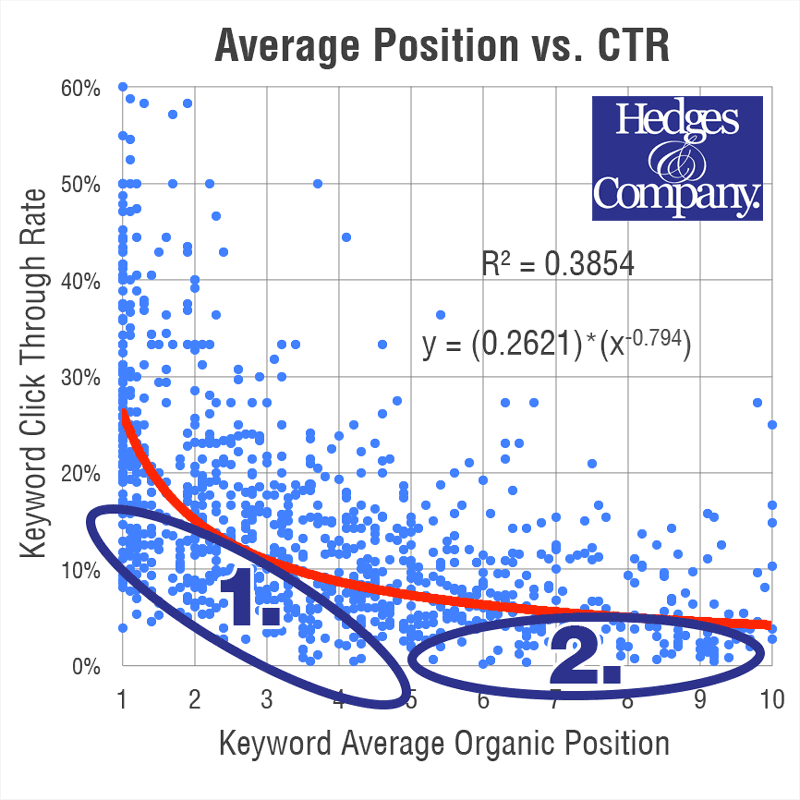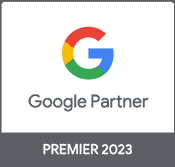Automotive SEO Case Study: How We Grew Organic Traffic 30% in 30 Days
An analytical approach to measure CTR vs. organic ranking grew traffic 30% in just 30 days #autoparts #SEO Click To TweetIn this automotive SEO study we show you how organic traffic increased 30% in 30 days (read down to the bottom for the before/after stats).
We’re always looking for better ways to use data to analyze and optimize for SEO, paid search or email marketing. Larry Kim’s blog post caught our eye on SEO strategies using click through rate (CTR). This is all related Google’s RankBrain algorithm. This approach is just as valid in 2020.

“Golly, the organic rankings are going up right in front of my eyes!”
We were off to conduct our own automotive SEO case study to see if we could add even more science to our SEO methods to improve organic results for our clients. Yay, science!
Automotive SEO study: analytical approach
We use an analytical, fact-based approach for search engine optimization (SEO) for auto parts and accessories. We think of it as a blend of the art (knowing the auto industry, parts of a vehicle, how enthusiasts shop) and science of SEO.
Using CTR to improve SEO vs. Google’s RankBrain

We did a scatter plot of average position vs click through rate (CTR) and identified the keywords with the highest and lowest CTR based on position. The red trendline provided the best fit to help us identify the lowest CTR keywords to focus on. Keywords around #1 have great ranking but very low CTR, which is very concerning. Keywords around #2 have decent rankings so we’ll try to improve the rankings a few positions while improving CTR. The slope of this trendline is calculated as y=(0.2621)*(x-0.794).
RankBrain is Google’s machine-learning artificial intelligence algorithm. RankBrain’s learning includes analyzing click through rate (CTR) for search results. It is always looking for the most relevant pages to show for specific keywords.
That’s a very simplistic explanation of RankBrain. But, we do know it is an increasingly important factor in determining organic rankings, and will be more important in the future.
There’s debate if CTR is a direct, or indirect, factor in organic ranking. Our position is, it’s probably a direct factor but it doesn’t really matter. Here’s why:
We know Google looks at engagement so we can’t focus on CTR alone, anyway. A page has to show high engagement once someone comes to a page (i.e., low bounce rate, session duration, etc.).
So whether it’s a direct or indirect factor, ranking and organic visits should increase if CTR improves and engagement remains high.
In other words, you can’t “game the system” to get a high CTR and still have poor page content. Good content is the ultimate requirement of any page that will rank well.
Our automotive SEO case study premise:
1). Do an analysis of keyword CTR vs. organic rankings.
2). Using quantitative analysis, identify keywords with lower click through rates vs. other similarly ranked keywords – in the future these are the keywords most at risk in a RankBrain SEO world.
3). Do our optimization magic to increase CTR on these lower CTR keywords.
4). Measure the before/after results.
In this approach, we’re taking advantage of keywords that have a somewhat decent ranking already and trying to increase the click through rate. For this case study we’re not focused on pages/keywords that are not currently ranked well (although we fix low-ranking pages for clients, too!). Either SEO strategy increases organic traffic.
Automotive SEO study analysis: keyword CTR vs. position
 We did an analysis of click through rate vs. average organic position. We pulled data from Google Search Console, and plotted the results in the scatter plot shown above.
We did an analysis of click through rate vs. average organic position. We pulled data from Google Search Console, and plotted the results in the scatter plot shown above.
To prioritize the keywords with the best vs. worst click through rate we created a trendline, testing until we got the best fit (highest R² score). In the chart our final trendline is in red. Our priority would be keywords with lower click through rates when compared to other similarly ranked keywords with higher CTR. These lower CTR words are plotted below the red line.
There are two main areas to look at: keywords around the oval labeled 1: These are keywords with a great organic ranking, but a low click through rate, which is a concern. If a keyword shows up in position 1 through 4 but has a low CTR it may not stay that high for long.
The other area are keywords around the oval labeled 2: These keywords have a decent ranking, but not the best and we’ll see if we can move them up a position or two.
Auto parts SEO study results: CTR and organic traffic
If you only care about the basic results, here they are from two sites:
- Organic clicks: +30% (Site #1)
- Click through rate: +20% (Site #1)
- Change in overall average position: +3.2 positions (Site #2)
- Increase in organic revenue: +23% (Site #1)
Increasing CTR 20% resulted in 30% more organic clicks #SEO Click To TweetUsing this more scientific approach to prioritizing SEO keywords showed results after just 30 days. We tried this on two websites. One showed an overall 20% increase in click through rate as measured by Google Search Console. Another site showed a 14% increase. Those are site-wide average increases across thousands of keywords so the best keywords that brought the most traffic had an even better improvement.
On one site there was nearly no change to total organic search impressions but total clicks and organic traffic increased 9% due to a better CTR. On another site there was a 20% increase in total organic impressions and a 30% increase in organic clicks, providing a 23% increase in organic revenue!
What about organic ranking? According to Google Search Console one site had an overall improvement of 3.2 positions and another had an improvement of 1.5 positions! Those are definite signs we “moved the needle.”
New update from Google Search Console on Clickthrough Rate
Just five days after this blog post went live, the Official Google Webmaster Central Blog confirmed how important engagement is. Google has made changes to the Search Console to include more Google Analytics data and here is a quote from Google (we have made some words bold for emphasis):
…some new capabilities resulting from this improved integration:
• Find landing pages that are attracting many users…but where users are not engaging with the website. In this case, you should consider improving your landing pages.
• Find landing pages that have high site engagement but are not successfully attracting users from Google organic search (e.g., have low click through rate)…
October 2020 Update…
We looked over this article from 2016 and the concepts are still valid in 2020.
Automotive SEO in a Google RankBrain future
Clearly this scientific approach to SEO, prioritizing keywords by click through rate, has merit. As Google’s RankBrain becomes a more important factor in organic rankings, along with keyword click through rate and the engagement of a reader, we have to all be more analytical and strategic with SEO efforts.
SEO is constantly changing yet stays the same. The more it changes (like with RankBrain) the more it stays the same (high quality still content wins).
This strategic approach to SEO is already part of our standard approach for our clients. And it’s working very well!
What is your pressing problem with SEO? Want to discuss any opportunities to improve your website’s organic search results? We’d like to show you how we can bring an analytical, fact-based approach to improve SEO for your site so you can sell more auto parts. Give us a call at (234) 380-1650.





